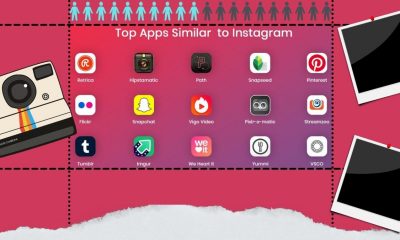News
FACEBOOK ADDING “FBCLID” PARAMETER TO OUTBOUND LINKS
Since October 2018, a lot of users are reporting that Facebook is adding to some of the URLs a tracking parameter called fbclid.
But the parameter is not independently working – it needs some sort of a website analytics tool to track all the results. In this case, Google Analytics is the correct analytics service.
Both gclid and fbclid parameters are added to the end of the URLs used in the outbound clicks on Facebook or the clicks on Google ads.
Can we talk about advantages of fbclid already?
The automatic tagging parameters added in the final URLs serve to identify each of the clicks that direct traffic to a web page in a unique way. No two parameters are the same and each of them gives different information.
Added to the URLs, and in an encrypted way, they identify campaigns, ad groups, ads, keywords, geographic locations, placements and many other details that are at a later stage reported in the data analysis tools.
In the case of Google Analytics, each visit made to a website through a tagged URL generates a session with a validity of up to 6 months by default. This helps measure performance of paid campaigns through shared links.
Similarly, the fbclid parameter can be used to generate more accurate Google Analytics performance reports and allow us to identify visits to our web pages more accurately. Possibly we will see an increase in sessions, visits and Facebook performance from now on.
The appearance of the URLs loaded in the navigators by referred traffic of Facebook happens to look similar to the URLs of Google Ads substituting the gclid parameter for the fbclid(Facebook click id?).
The referred traffic in Google Analytics already appears with this gclid added in some cases to the final URLs.
What is the fbclid exactly?
It seems that Facebook started to add the fbclid parameter to every external URL address. We tried to find an official information about the fbclid parameter, but unfortunately our research was in vain.
Therefore, the comments we make in this blog article are based on assumptions and previous experience related to the aforementioned gclid. The gclid is another parameter gives some important information about people who click on your ads around your website and it ensures that your analytics data is up-to-date. This parameter is attached to the URL address, but it is not visual for users.
On the other hand, fbclid is totally visual and makes some people concerned about its purpose.
With the intent of tracking users outside of Facebook, the fbclid parameter is something totally new for the users. Still, no official announcement has been given about it.
After several tests performingclicking on links from the app, from the Facebook browser itself, from Chrome and from Safari we have seen cases in which the fbclid is present and others when the parameter is absent.
We are not certain in which cases the fbclid parameter is added to the URLs and in which it is not added, but we are sure that it is something new and that has attracted a lot of attention due to its involvement with digital marketing and advertising.
Similarities between fbclid and gclid parameters
It is known that the meaning of fbclid is Facebook Click Identifier, similar to the gclid or Google Click Identifier added to the final URLs of Google Ads ads when using the automatic labelling. In this case, the fbclid parameter seems to be used to uniquely identify Facebook clicks from users and probably collect some information about their online behavior.
Usually, the URL parameters are used to better understand the performance of an ad, the website traffic results and how your website or the users are converting.
But the parameter is not independently working – it needs some sort of a website analytics tool to track all the results. In this case, Google Analytics is the correct analytics service.
Both gclid and fbclid parameters are added to the end of the URLs used in the outbound clicks on Facebook or the clicks on Google ads.
Can we talk about advantages of fbclid already?
The automatic tagging parameters added in the final URLs serve to identify each of the clicks that direct traffic to a web page in a unique way. No two parameters are the same and each of them gives different information.
Added to the URLs, and in an encrypted way, they identify campaigns, ad groups, ads, keywords, geographic locations, placements and many other details that are at a later stage reported in the data analysis tools.
In the case of Google Analytics, each visit made to a website through a tagged URL generates a session with a validity of up to 6 months by default. This helps measure performance of paid campaigns through shared links.
Similarly, the fbclid parameter can be used to generate more accurate Google Analytics performance reports and allow us to identify visits to our web pages more accurately. Possibly we will see an increase in sessions, visits and Facebook performance from now on.
-

 Marketing Tips9 hours ago
Marketing Tips9 hours agoWhat is my Instagram URL? How to Find & Copy Address [Guide on Desktop or Mobile]
-

 Business Imprint2 days ago
Business Imprint2 days agoAbout Apple Employee and Friends&Family Discount in 2024
-

 App Development2 days ago
App Development2 days agoHow to Unlist your Phone Number from GetContact
-

 News3 days ago
News3 days agoOpen-Source GPT-3/4 LLM Alternatives to Try in 2024
-

 Crawling and Scraping3 days ago
Crawling and Scraping3 days agoComparison of Open Source Web Crawlers for Data Mining and Web Scraping: Pros&Cons
-

 Grow Your Business9 hours ago
Grow Your Business9 hours agoBest Instagram-like Apps and their Features
-

 Grow Your Business3 days ago
Grow Your Business3 days agoHow to Become a Prompt Engineer in 2024
-
Marketing Tips9 hours ago
B2B Instagram Statistics in 2024





